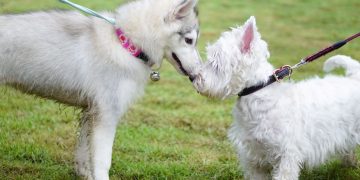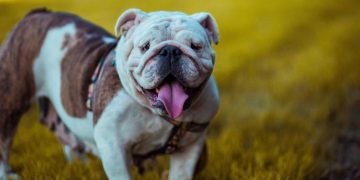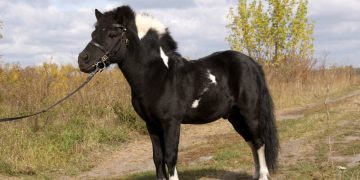The Arabian horse, often regarded as one of the oldest and most influential horse breeds in the world, has captivated horse lovers and riders for centuries. Known for its striking beauty, endurance, and spirited temperament, the Arabian horse has played a crucial role in the development of many other horse breeds and remains a favorite in various equestrian disciplines. This comprehensive guide explores the history, characteristics, training, care, and disciplines in which Arabian horses excel, providing an in-depth look at what makes this breed so special.
History of the Arabian Horse
Origins
The origins of the Arabian horse can be traced back over 4,500 years to the Arabian Peninsula, where they were bred by the Bedouins, nomadic tribes who valued these horses for their endurance, speed, and loyalty. Arabian horses were not only companions and working animals but also symbols of status and pride among the Bedouin tribes.
The Influence of Bedouin Culture
Bedouins developed their horses in harsh desert environments, selecting for traits that would enhance survival, such as resilience, stamina, and a strong bond with humans. They often kept their horses in close contact with their families, ensuring the horses were well-treated and socialized. This close relationship resulted in Arabians possessing a unique temperament characterized by intelligence, gentleness, and a strong desire to please.
Historical Significance
Arabian horses have had a profound impact on the development of numerous breeds worldwide. They were introduced to Europe through trade and war, influencing breeds such as the Thoroughbred, Andalusian, and Quarter Horse. The Arabian’s contributions to the development of modern horse racing and other equestrian disciplines cannot be overstated.
In the 19th century, the Arabian horse became highly sought after in Europe and the United States, leading to efforts to preserve and promote purebred Arabian horses. The Arabian Horse Association was established in 1908 in the U.S. to promote the breed’s interests and maintain breeding records.
Characteristics of the Arabian Horse
Physical Traits
The Arabian horse is known for its distinctive appearance and unique features. Here are some key physical characteristics:
- Height: Arabians typically stand between 14.1 and 15.3 hands (57 to 63 inches at the withers).
- Weight: They usually weigh between 800 and 1,200 pounds, depending on their build and condition.
- Build: Arabians have a compact, muscular body with a deep chest, short back, and strong hindquarters, making them agile and powerful.
- Head: One of the most recognizable features of the Arabian horse is its finely chiseled head, characterized by a broad forehead, large expressive eyes, and a small, dished profile. They also have large nostrils for increased airflow.
- Mane and Tail: Arabians possess long, flowing manes and tails that enhance their gracefulness. Their tails are often carried high, adding to their elegant appearance.
- Coat Colors: Arabian horses come in a variety of colors, including bay, gray, chestnut, black, and roan, with many having unique markings.
Gaits
The Arabian horse is known for its smooth and fluid gaits, which are essential for endurance riding and other equestrian disciplines. Some key gaits include:
- Walk: A relaxed, four-beat gait that is smooth and comfortable.
- Trot: A lively two-beat diagonal gait, often described as elegant and balanced.
- Canter: A three-beat gait that is powerful and graceful, allowing for quick transitions and agility.
Temperament
Arabians are known for their spirited and intelligent nature. They are often described as sensitive, willing, and eager to learn, which makes them highly trainable. Their strong bond with humans stems from their history with the Bedouins, resulting in a horse that is both loyal and responsive to its rider.
Training and Care
Training
Training an Arabian horse requires a blend of patience, consistency, and positive reinforcement. Here are key components of training an Arabian horse:
- Groundwork: Establishing a solid foundation of respect and trust is essential. Groundwork exercises help improve communication and build a strong relationship between horse and handler.
- Riding Skills: Due to their intelligence and responsiveness, Arabians can excel in various disciplines. Training should focus on developing smooth transitions, balance, and agility.
- Discipline-Specific Training: Arabians thrive in disciplines such as dressage, endurance riding, and jumping. Tailoring training programs to the specific discipline helps maximize their potential.
- Positive Reinforcement: Utilizing positive reinforcement techniques, such as treats and praise, encourages desirable behaviors and strengthens the bond between horse and rider.
Care
Proper care is essential for maintaining the health and well-being of Arabian horses. Key aspects of care include:
- Diet: Providing a balanced diet that includes high-quality hay, grains, and supplements tailored to the horse’s needs is crucial for maintaining energy levels and overall health.
- Exercise: Regular exercise is essential for building endurance, strength, and mental stimulation. Arabians thrive on daily activities, whether through riding, lunging, or turnout.
- Veterinary Care: Regular veterinary checkups, vaccinations, and dental care are important for preventing illness and ensuring optimal health.
- Farrier Care: Regular hoof care, including trimming and shoeing, helps maintain hoof health and performance.
- Grooming: Arabians have a fine coat that requires regular grooming to maintain its health and shine. Daily brushing helps remove dirt and debris while promoting circulation.
Disciplines and Competitions
The Arabian horse is versatile and excels in various equestrian disciplines. Some of the most popular activities they participate in include:
Endurance Riding
Arabians are particularly well-suited for endurance riding due to their exceptional stamina, resilience, and ability to navigate varied terrain. Endurance competitions often cover long distances (typically ranging from 50 to 100 miles) and test the horse’s fitness, training, and partnership with the rider.
Dressage
Arabians excel in dressage, where their natural grace and agility shine. They are often successful in both lower-level competitions and high-level dressage tests, showcasing their ability to perform advanced movements with elegance and precision.
Show Jumping
While traditionally associated with western disciplines, Arabians have made their mark in show jumping as well. Their agility, speed, and intelligence allow them to excel in this competitive discipline.
Halter Shows
Arabians are commonly shown in halter competitions, where they are judged based on conformation and breed standards. Their unique appearance and breeding history make them standout competitors in this arena.
Western Riding
Arabians are also popular in various western riding disciplines, including reining, cutting, and western pleasure. Their versatility allows them to adapt to different riding styles, making them suitable for a wide range of equestrian activities.
Conclusion
The Arabian horse is a breed steeped in history, beauty, and versatility. Known for its striking appearance, intelligence, and endurance, the Arabian has earned its place as one of the most beloved horse breeds worldwide. From their origins with the Bedouins to their modern-day success in various equestrian disciplines, Arabians continue to capture the hearts of horse enthusiasts everywhere.
Whether in endurance riding, dressage, or show jumping, the Arabian horse stands out as a remarkable breed that exemplifies grace, power, and resilience. Proper training and care are essential to bringing out the best in these extraordinary horses, and for those fortunate enough to work with an Arabian, the rewards are truly unparalleled. Their rich history, distinctive characteristics, and enduring performance make the Arabian horse a symbol of equine excellence that will continue to thrive for generations to come.

























